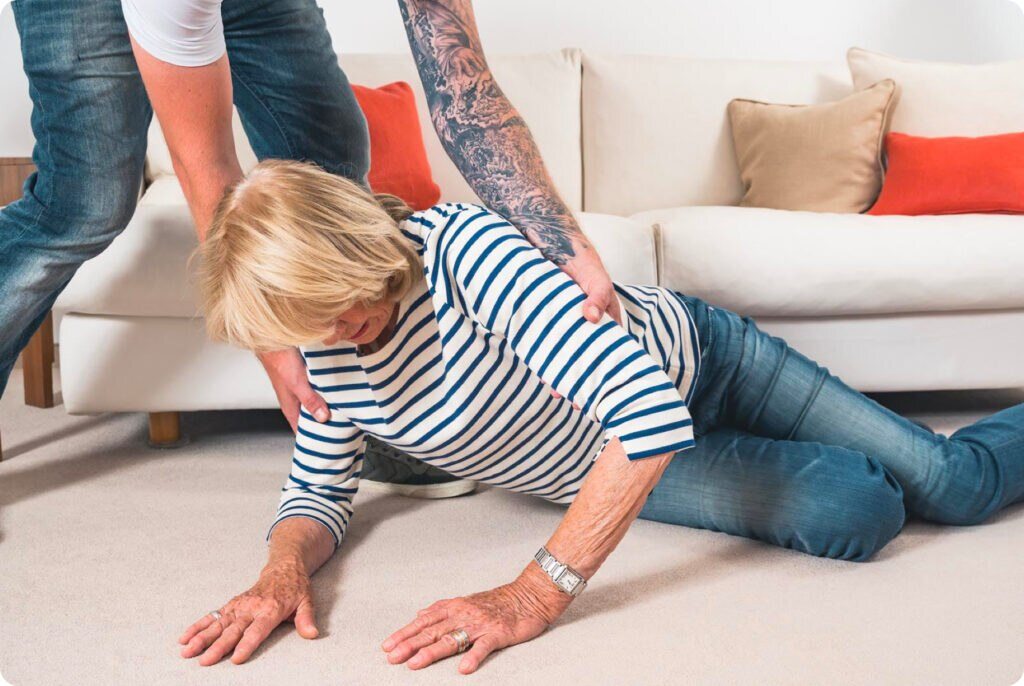
Scaling Evidence-Based Fall Prevention: What We're Learning From Zurich to Barcelona to Berlin
How clinical validation meets real-world implementation across three countries—and why the path from research to practice matters more than the technology itself
The next few months mark a pivotal moment in our journey at LINDERA. Not because we're attending conferences or announcing new features, but because we're watching a hypothesis play out in real time:
Can AI-powered fall prevention actually scale beyond pilot programs and research papers?
The question matters. In the US alone, falls among older adults result in over 36,000 deaths annually and cost the healthcare system an estimated $50 billion. In Germany, where LINDERA is based, the numbers are proportionally similar. Globally, falls are the second leading cause of unintentional injury deaths. Yet despite decades of research identifying risk factors, systematic prevention remains frustratingly elusive.
We think we know why. And the answer isn't what most people expect.
The Research That Changes Everything (Maybe)
Let's start with what should be the good news: Our latest peer-reviewed study with Charité Universitätsmedizin Berlin is heading toward publication. The research team—Raeder, K., Strutz, N., Kuntz, S., Müller-Werdan, U., & Lahmann, N. A. (2025)—compared our 3D skeleton tracking technology against Kinect®-based mobility analysis systems in older adults.
The findings validate two critical things: excellent measurement precision and real-world usability.
Why does this matter? Because fall prevention has historically faced a cruel trade-off. Gold-standard gait analysis requires expensive lab equipment, trained technicians, and controlled environments. It's precise but completely impractical for the millions of older adults who need assessment. Consumer-grade solutions are accessible but often lack the clinical validation to drive intervention decisions.
If our Charité study publishes before the holidays—and we hope it does—it will demonstrate something the field has struggled to achieve: clinical-grade accuracy delivered through a smartphone camera. No markers. No special hardware. Just an algorithm trained on thousands of gait patterns, validated against established protocols.

But here's the uncomfortable truth we've learned after eight years building LINDERA:
Scientific validation is necessary but nowhere near sufficient.
The Implementation Gap Nobody Talks About
This fall, I'm traveling across Europe—Zurich, Madrid, Barcelona, Berlin, Hannover, Dessau. Six cities, three countries, one persistent pattern: The technology works. The implementation is hard.
In Zurich this week, discussions centered on AI for hospitals and care facilities. Switzerland, with its healthcare system consistently ranked among the world's best, shows sophisticated understanding of how technology can augment clinical workflows. The infrastructure is there. The digital literacy is high. Yet even here, adoption requires navigating complex stakeholder ecosystems.
Spain offers a different lens. Our work with Dorea, which has been using LINDERA in Germany for years to prevent falls, is now expanding to a sister facility in Madrid. This isn't a pilot—it's organic growth based on demonstrated outcomes. In Barcelona, the DKV Mentoring Program culminates in late November, showcasing what structured support can do to accelerate technology transfer.
Germany presents perhaps the most instructive case. At the Zukunftssalon in Berlin (November 20-21), the focus is "Concepts and Measures for Preventing Care Dependency." The themes—prevention, rehabilitation, health literacy, longevity—are exactly right. But here's the challenge we keep encountering:
Top-down innovation struggles when bottom-up buy-in doesn't exist.
This isn't unique to Germany. It's a pattern we see replicated across healthcare systems globally, including in the US.
Why Bottom-Up Beats Top-Down (Even With Better Science)
Let me be direct about something that took us years to fully understand: Regulatory approval, reimbursement pathways, and policy mandates are necessary infrastructure. But they don't drive adoption.
What drives adoption? Three things:
1. Front-line practitioners who see immediate value
When a nurse can assess fall risk in 10 minutes instead of 45, document it seamlessly, and get actionable interventions—they advocate for the tool. Not because management mandated it, but because it makes their hard job slightly less hard.
2. Facilities that can demonstrate outcomes
Our Charité research shows 17.8% fall risk reduction after the second analysis, 38% reduction in fear of falling and psychological burden, and a trend toward decreased hospitalizations after falls. These aren't academic metrics. They're budget line items and quality indicators that facility directors care about deeply.
3. Reimbursement models that reward prevention
This is where healthcare systems differ dramatically. Value-based care models create incentives for preventing falls. Fee-for-service models often don't. The technology is identical. The economics are completely different.
The pattern we observe: Innovation scales fastest where these three elements align. It struggles—regardless of scientific merit—where even one is missing.
What December Will Tell Us
By mid-December, we'll have presented LINDERA at the DRK (German Red Cross) conference in Hannover (December 9) and the Pflege Digital Summit at the Bauhaus in Dessau (December 10-11). These aren't just speaking opportunities. They're laboratories for observing how ideas spread.
The Dessau event is particularly interesting. The Bauhaus—the iconic design school that revolutionized architecture by insisting form follows function—hosts discussions on care digitalization. The metaphor is almost too perfect. What made Bauhaus revolutionary wasn't just aesthetic innovation. It was the insistence that design must serve human needs, be reproducible at scale, and integrate seamlessly into daily life.
Sound familiar?
Fall prevention technology that works in lab conditions but fails in practice isn't innovative. It's expensive research. What matters is whether the 72-year-old woman in suburban Munich, or suburban Minneapolis, or suburban Madrid can have her gait assessed accurately, receive personalized interventions, and reduce her fall risk—without needing a university hospital nearby.
The Uncomfortable Truth About Healthcare Innovation
Here's what eight years in health tech has taught us, and what we suspect applies far beyond LINDERA:
The problem is almost never the technology. Today's AI can analyze gait. Computer vision can extract clinical-grade parameters from smartphone video. Machine learning can identify patterns humans miss. These problems are solved or solvable.
The problem is the system. Not "the healthcare system" in the abstract, but the specific, granular reality of how care gets delivered. How nurses spend their shifts. What administrators get measured on. How reimbursement actually works. Who makes purchasing decisions and what criteria they use. How data flows between systems (or doesn't).
You can't solve system problems with technology alone. You need technology that's been designed from the ground up to fit into systems as they exist, while creating leverage for incremental improvement.
This is why we obsess over seemingly small things:
- Can a nurse complete an assessment in a hallway between rooms?
- Does the data integrate with existing documentation systems?
- Are the intervention recommendations specific enough to be actionable but flexible enough for individual circumstances?
- Can a facility administrator pull reports their quality team actually needs?
These aren't technological questions. They're implementation questions. And implementation is where most healthcare innovation dies.
What This Means for Global Aging
The global population aged 60 and older is projected to reach 2.1 billion by 2050. Falls increase exponentially with age. The math is brutal: more older adults + existing fall rates = overwhelming healthcare costs and human suffering.
Prevention is the only scalable answer. But prevention requires early identification of risk, which requires accessible assessment tools, which requires technology that works in real-world settings, which requires solving the implementation challenges that have nothing to do with algorithm accuracy.
Our hypothesis—the one being tested across Zurich, Madrid, Barcelona, Berlin, Hannover, and Dessau—is that bottom-up adoption, driven by demonstrated outcomes, can create the pull that makes top-down support effective. You need both. But the sequence matters.
The Charité study gives us the scientific credibility. The implementations across Europe give us the real-world proof points. The question is whether we can translate these learnings into systematic change.
The Next Chapter
Will the Charité study publish before Christmas? We don't know. Publication timelines are notoriously unpredictable.
What we do know: The research validates what we've built technically. The implementations validate what we've learned about change management. And the conversations happening in six cities across three countries are teaching us what comes next.
This isn't event-hopping. It's ecosystem-building. Every conversation with a nurse who's used the system, every facility director who's measured outcomes, every policymaker wrestling with reimbursement models—they're all data points in understanding how evidence-based innovation actually scales.
The future of fall prevention isn't just better algorithms. It's better understanding of how innovation moves from possibility to practice. From papers to people. From what works in theory to what works when an 80-year-old man walks down the hall of a care facility in Berlin—or Boston, or Barcelona, or anywhere else people are aging.
That's the story unfolding this fall and winter. Not the technology story. The implementation story. And that's the one that matters.
Menia Ettrich is Customer Lead at LINDERA, where she works at the intersection of clinical research, technology implementation, and care delivery. Based in Cologne, she's currently tracking how evidence-based fall prevention scales across different healthcare systems in Europe—with an eye toward what those learnings mean globally.
Further Resources
Research & Evidence: Follow our peer-reviewed publications in collaboration with Charité Berlin
Implementation Case Studies: Real-world outcomes from care facilities across Germany.
Healthcare Innovation Insights: Subscribe to our newsletter for analysis on the gap between health tech promise and delivery


